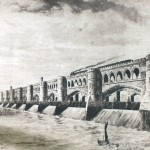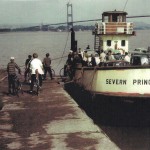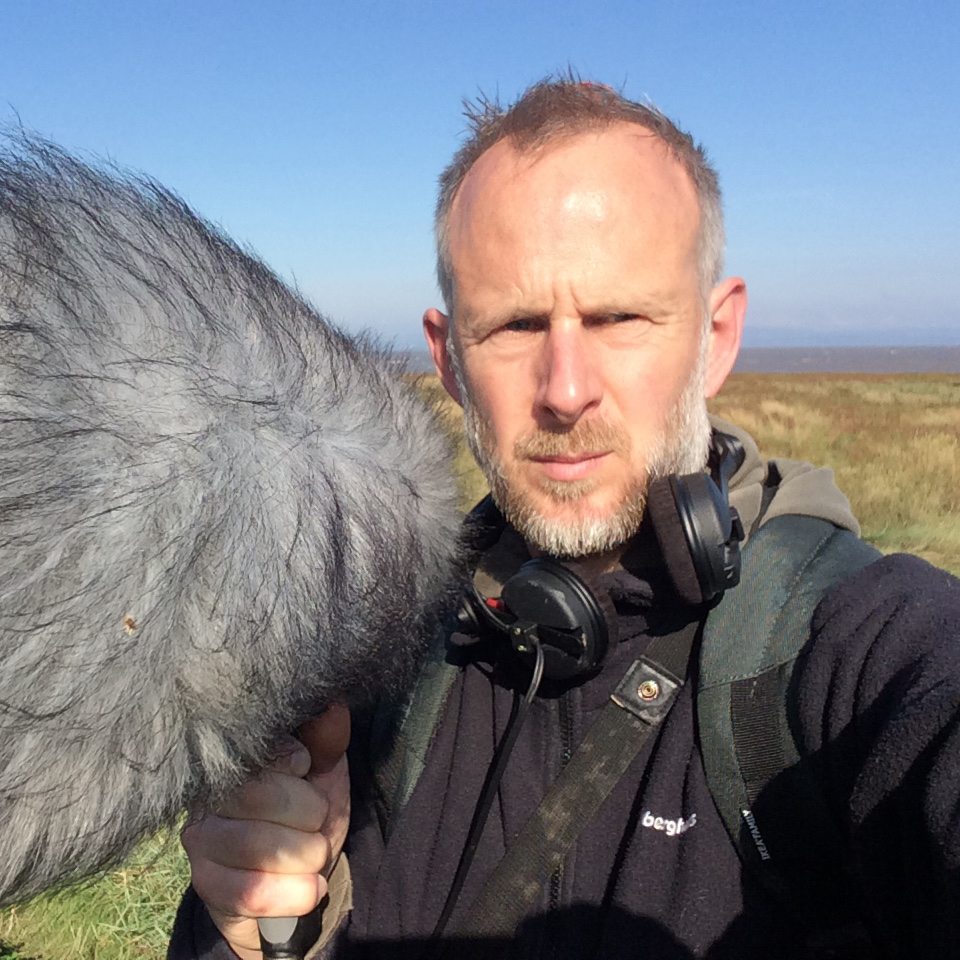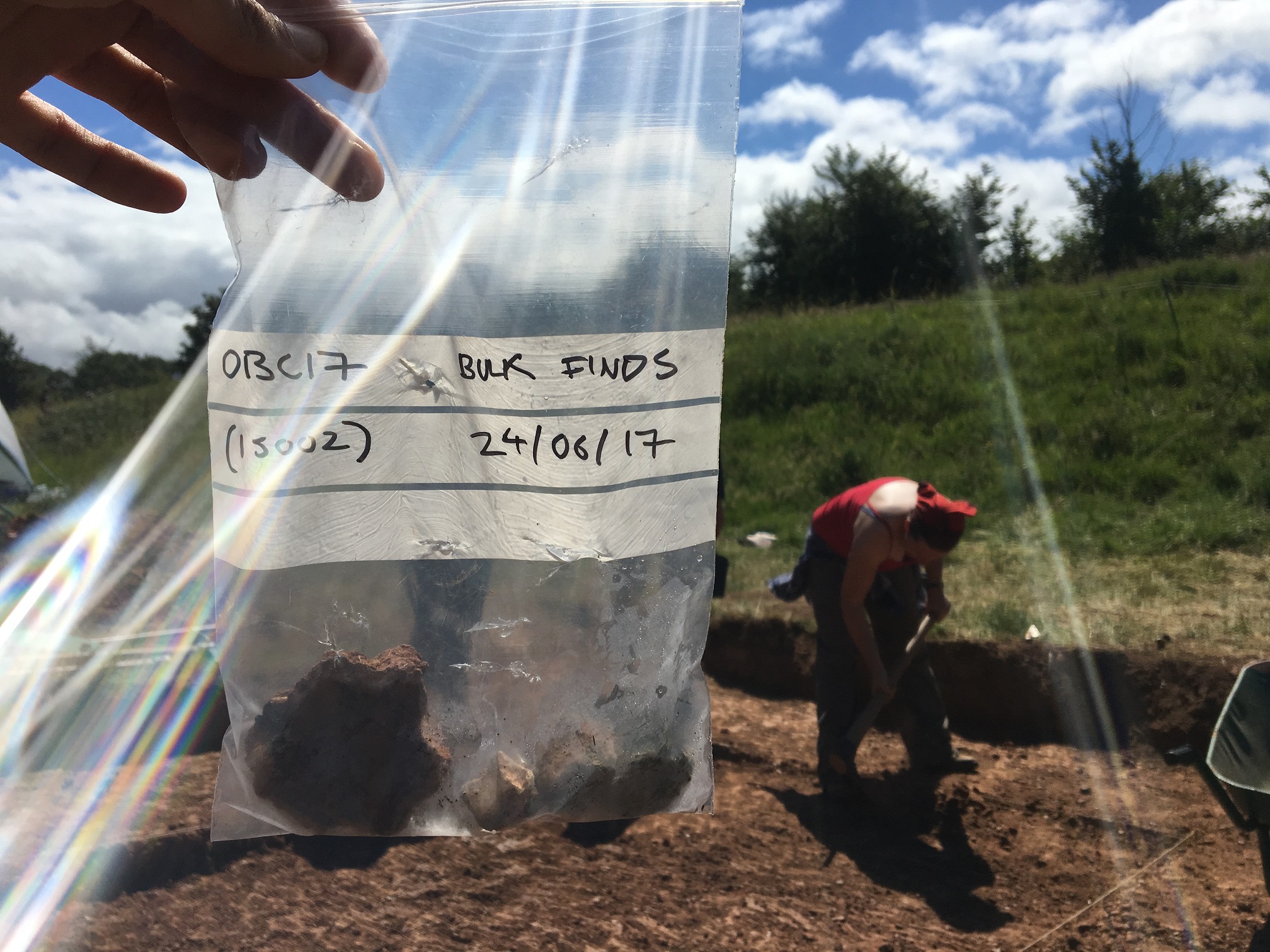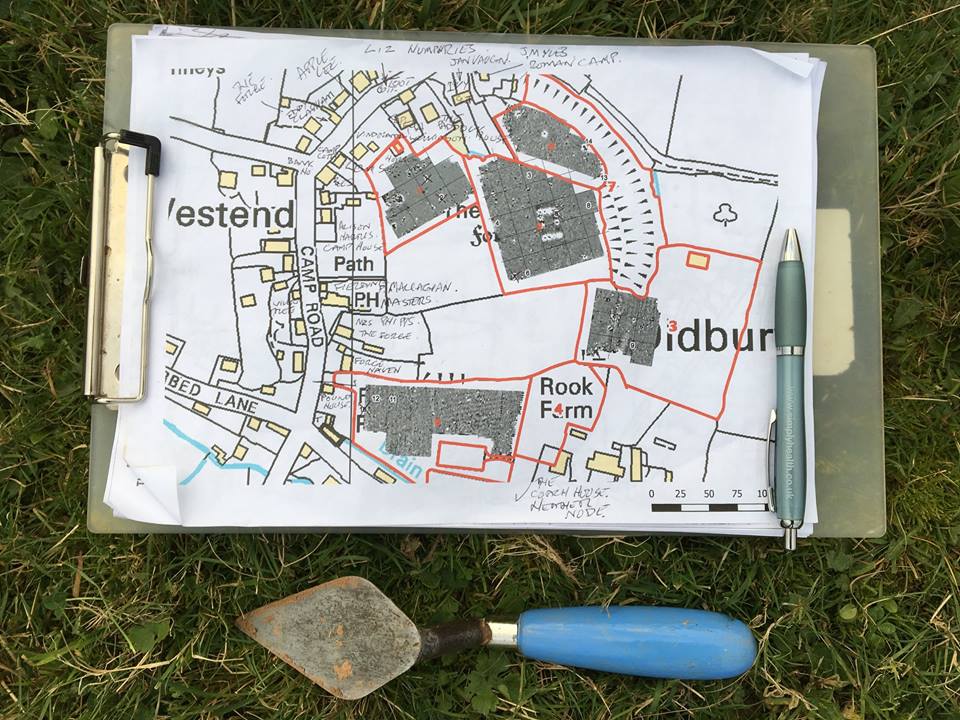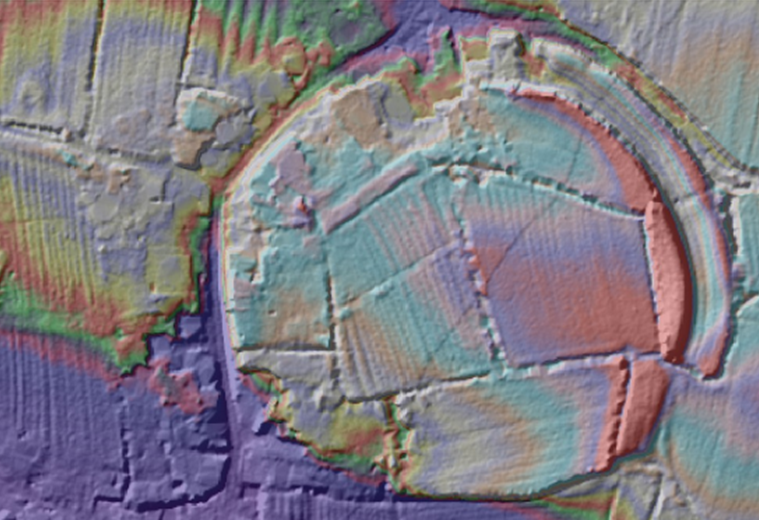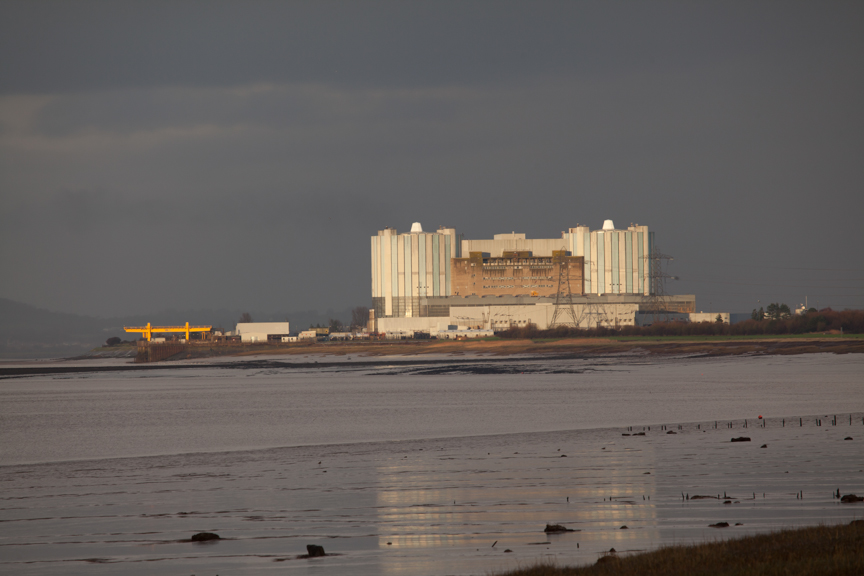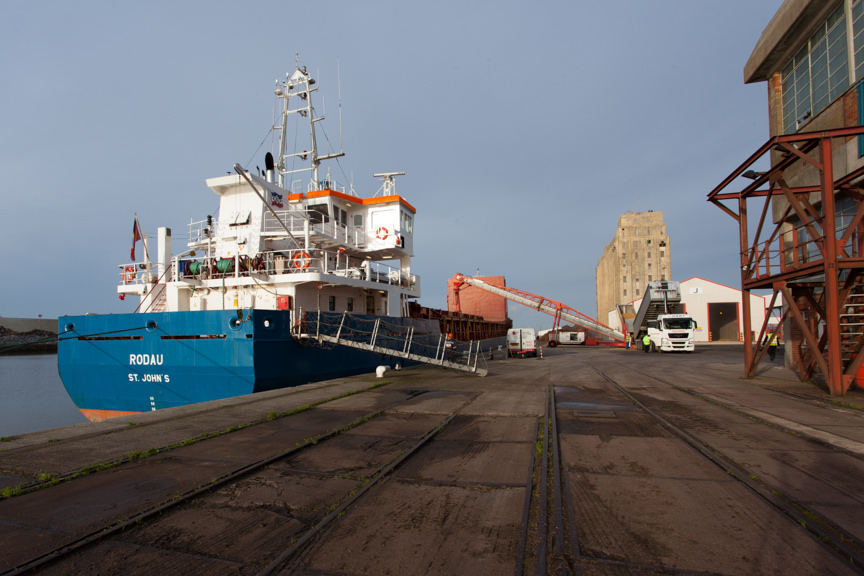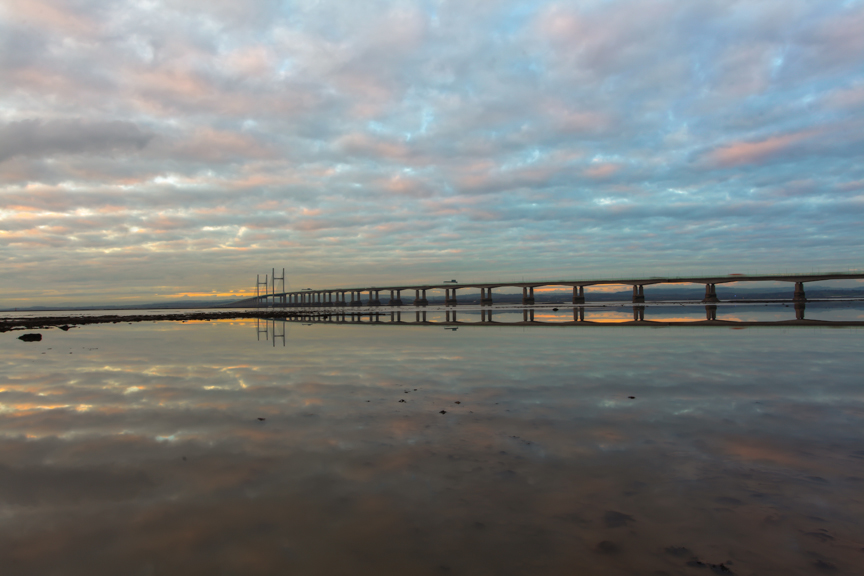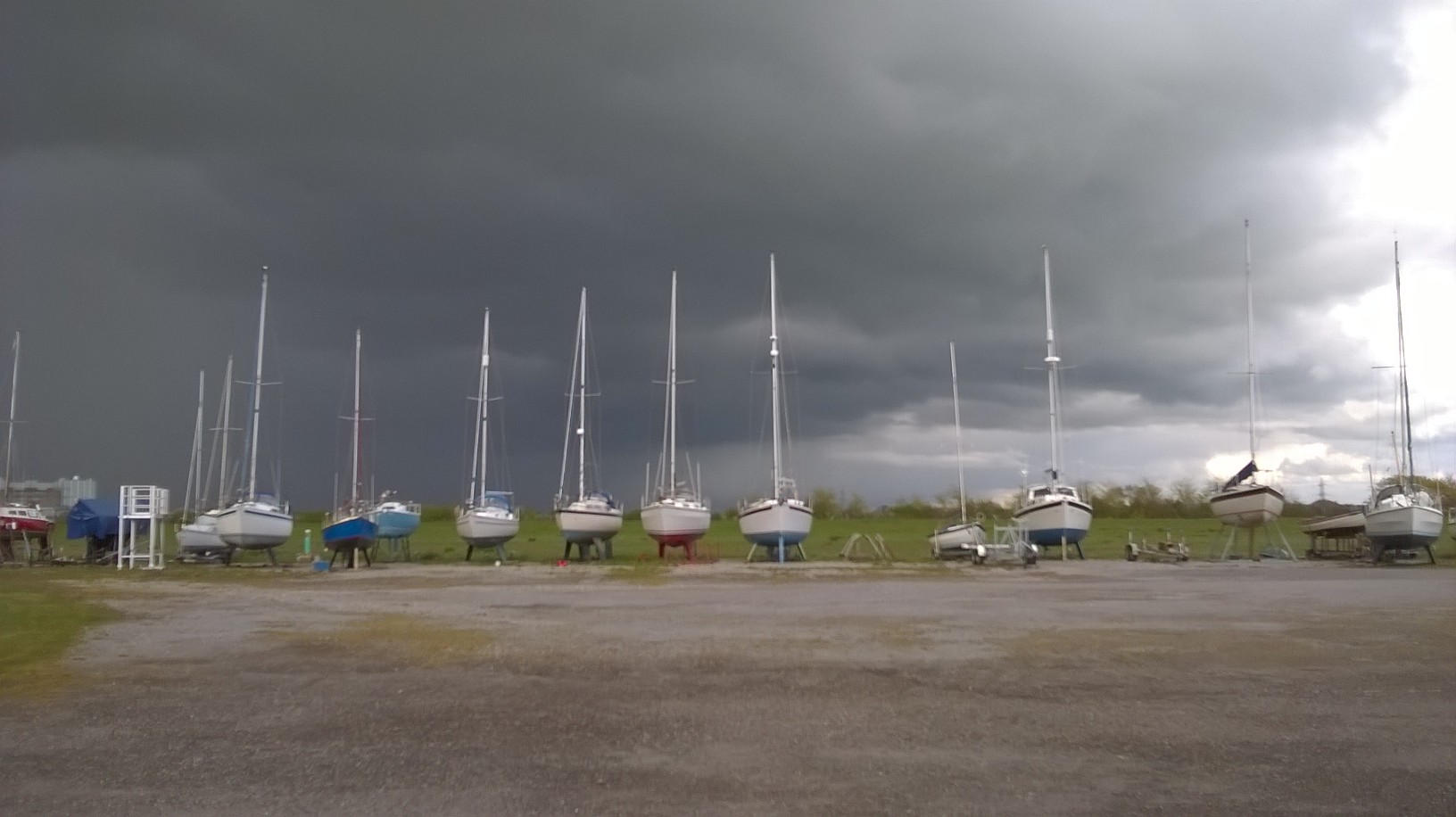Shaping the Landscape / Architecture
River Crossings
-
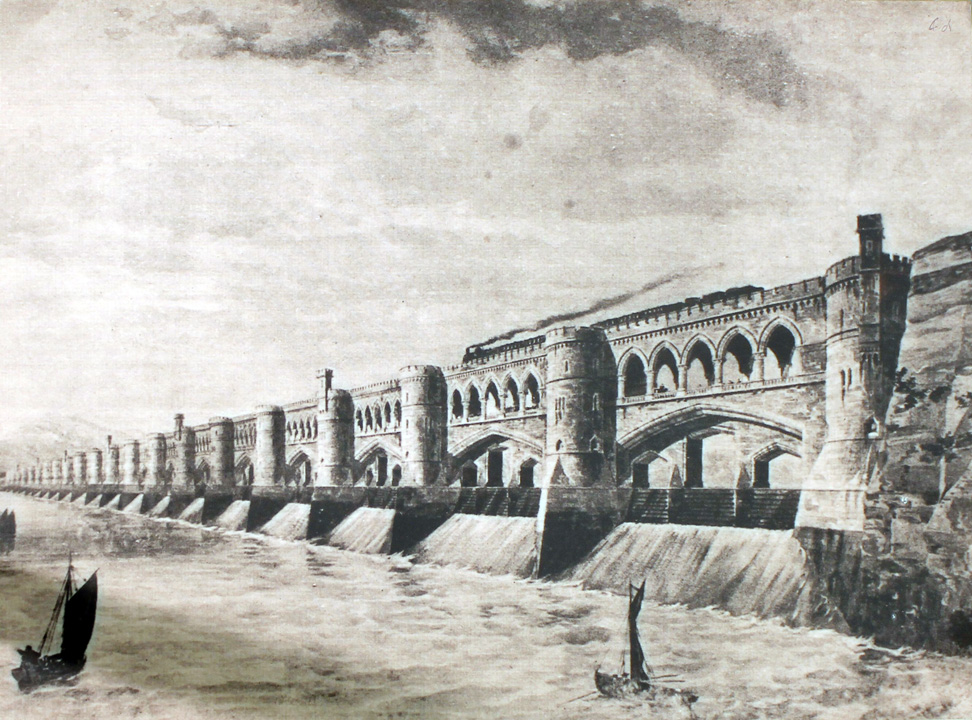 Proposed railway viaduct by Charles Vignole 1834
Proposed railway viaduct by Charles Vignole 1834 -
 Cyclists boarding the Princess at Aust
Cyclists boarding the Princess at Aust -
 The Severn Bridge
The Severn Bridge
What do Bob Dylan, the author of Robinson Crusoe and the Queen have to do with crossing the River Severn? Read on to find out!
Early Crossings
The passage of the Severn between Aust and Beachley (where the first Severn Bridge lies today) was most likely in use since ancient times as the main route between south west England and Wales, with references made to it as early as the 12th century. In the early 15th century the passage was used by the many visitors to the chapel of St Twrog in Beachley.
But at over a mile long with a rough, swift tide and small boats it was a dangerous crossing. In the 18th century Daniel Defoe, author of Robinson Crusoe, refused to make the passage, calling it “an ugly, dangerous and very inconvenient ferry!”
A new passage opened up in competition a couple of miles south (close to where the second Severn Bridge is today) and so the original crossing was dubbed the ‘old passage’.
In 1825 the old passage was revived with the formation of the Old Passage Ferry Association, sponsored by the Duke of Beaufort, Lord Tidenham. Stone piers and the introduction of steamboats in 1827 improved the service but it remained dangerous and the Beachley-Aust ferry sank with no survivors in 1839 and again in 1844.
In 1860, with the expansion of rail travel and the decline of traffic using the Aust crossing, the steamboats were scrapped. In 1863, the New Passage gained the advantage of being linked up with the built railway on both sides of the river and so became the standard route until 1886, when the Severn Tunnel opened and people could pass under the river safely by train.
The Car Ferry
In the 1920s the mass production of motor vehicles led to new demand for a ferry, so the service was relaunched. At first only taking bikes and motorbikes, this expanded in 1934 with the Severn Queen who could take 17 cars at a time. But the huge tidal range of the Severn made the timetable notoriously unreliable.
In May 1966 Bob Dylan took the car ferry from Aust to Beachley on his way from Bristol to Newport as part of his infamous ‘Judas’ tour. He was photographed by Barry Feinstein standing on the jetty in an iconic image that was used on the cover of Martin Scorsese’s documentary on Dylan, No Direction Home. The half-built first Severn Bridge can be seen in the background.
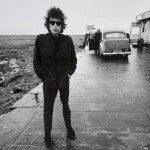
The ferry closed in September that year on the day before the first Severn Bridge opened, and the ferry and its buildings fell into disrepair, although are still visited today with many paying homage to Bob Dylan.
The Two Bridges
The Severn Bridge was opened in 1966 by the Queen to replace the ferry service crossing from Aust to Beachley.
The striking suspension bridge gained a Grade I Listing in 1999, and its popularity led to a second bridge being built to meet demand in 1996.
The second Severn crossing at Severn Beach (where the new passage was) is specially designed to stand up to high winds and to take a higher proportion of traffic.
The dramatic architecture of these two white bridges set against the beautiful natural surroundings of the Lower Severn Vale Levels makes it a popular place to visit.
Visit Aust Cliff or Severn Beach to see these amazing bridges.
Did You Know?
The first Severn Bridge is actually two bridges, a bridge across the Severn linked to a bridge across the River Wye. Only the bridge across the Wye links England to Wales as Beachley (at the end of the first span) is still in England!

